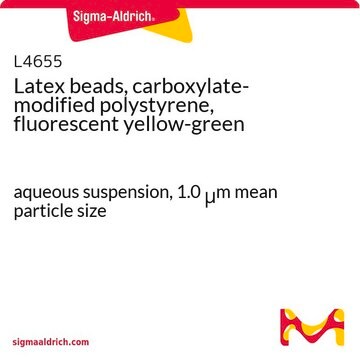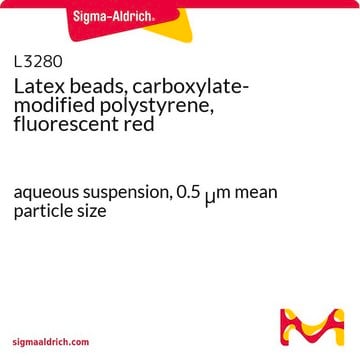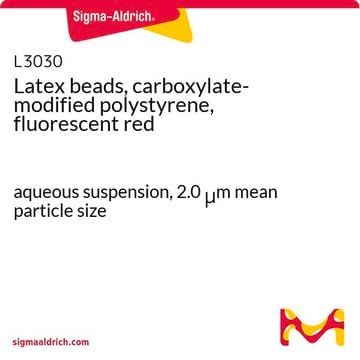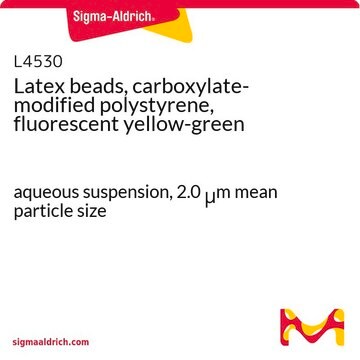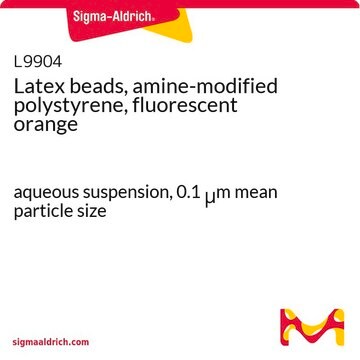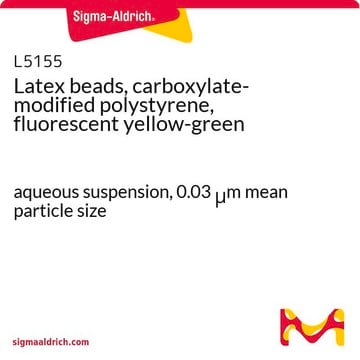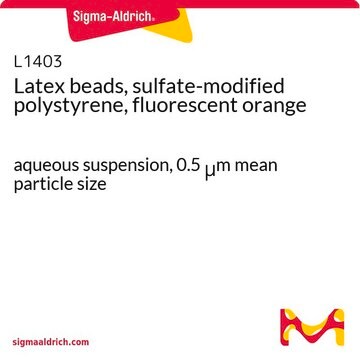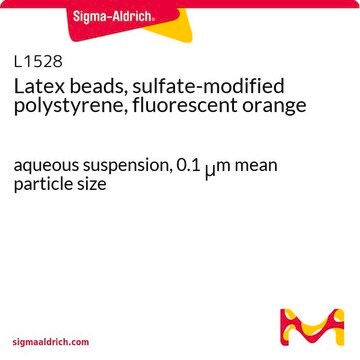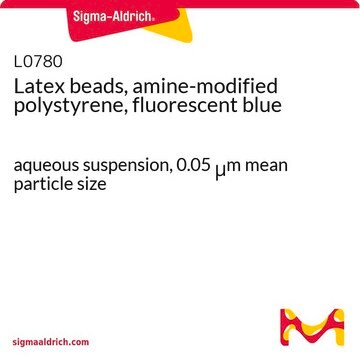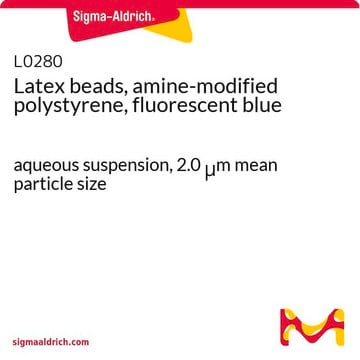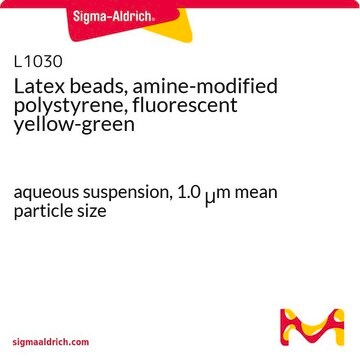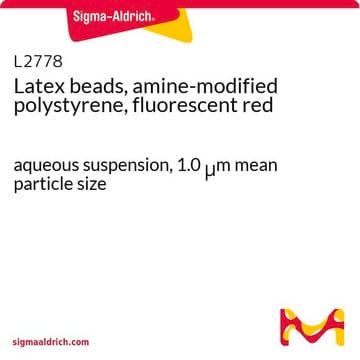Polystyrene beads are available in several formats - unmodified, carboxyl-modified, or amine-modified - as well as various colors and numberous sizes. This particular product is an amine-modified bead containing a blue fluorescent dye. See the image below to review the basic structure. This is a surface modification that allows for the attachment of certain ligands such as polypeptides via the carboxyl-terminus. The dyes are embedded in the polystyrene bead during the manufacturing process. These are not bound to the surface of the bead.
L5530
Latex beads, carboxylate-modified polystyrene, fluorescent orange
aqueous suspension, 0.5 μm mean particle size
Méret kiválasztása
25 400,00 Ft
Méret kiválasztása
About This Item
25 400,00 Ft
Javasolt termékek
Forma
aqueous suspension
Minőségi szint
összetétel
Solids, 2.5%
átlagos részecskeméret
0.5 μm
fluoreszcencia
λex ~520 nm; λem ~540 nm
Looking for similar products? Látogasson el ide Útmutató a termékösszehasonlításhoz
Alkalmazás
Tárolási osztály kódja
10 - Combustible liquids
WGK
WGK 3
Lobbanási pont (F)
Not applicable
Lobbanási pont (C)
Not applicable
Válasszon a legfrissebb verziók közül:
Már rendelkezik ezzel a termékkel?
Az Ön által nemrégiben megvásárolt termékekre vonatkozó dokumentumokat a Dokumentumtárban találja.
Az ügyfelek ezeket is megtekintették
-
Does the polystyrene bead have amine groups attached to the bead surface? What is the purpose of this modification? How is the dye bound to these beads.
1 answer-
Helpful?
-
-
Can this product be used in animal rodent model for in vivo imaging using Perkin Elmer IVIS Spectrum platform???
1 answer-
Product L5530, Latex beads, carboxylate-modified polystyrene, is not tested for fluorescent orange in animal rodent model for in vivo imaging using Perkin Elmer IVIS Spectrum platform. It is encouraged that the end-user determines the suitability of this application.
Please note that the fluorescence is : λex ~520 nm; λem ~540 nm
Helpful?
-
-
What does "λex ~520 nm" mean? In particular, I do not understand the meaning of "~". Is it possible to excite with excitation wavelengths from 430 to 510 nm? 「λex ~520 nm」とはどういう意味ですか? 特に「~」の意味がわかりません。 430~510nmの励起波長で励起できるのですか?
1 answer-
Product L5530 is a fluorescent product having λex ~520 nm; λem ~540 nm, where λex ~520 nm means excitation at 520nm and λem ~540 nm means emission at 540nm. The spectra is quite tight and hence it will be important to set the filters accordingly. "~" means "about/around" in this aspect, where if λex is 520 nm, +/- 5 to 10 nm difference in the wavelength should be alright.
Generally, a range of 430-510nm ex/em is not suitable for green fluorochomes. The 430 nm wavelength is too early for excitation and is not recommended for this product.Helpful?
-
Active Filters
Tudóscsoportunk valamennyi kutatási területen rendelkezik tapasztalattal, beleértve az élettudományt, az anyagtudományt, a kémiai szintézist, a kromatográfiát, az analitikát és még sok más területet.
Lépjen kapcsolatba a szaktanácsadással